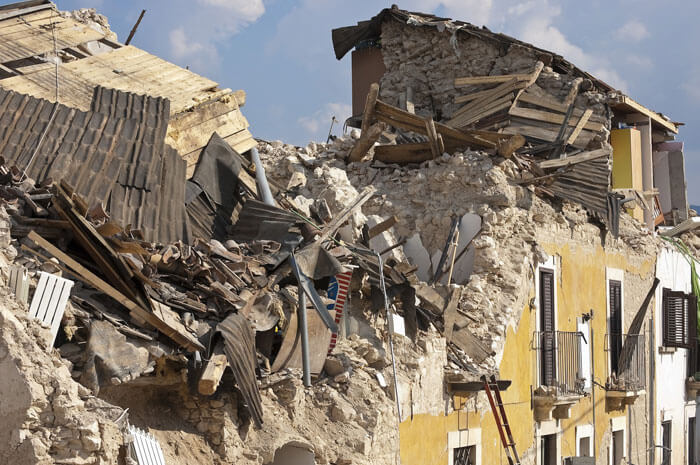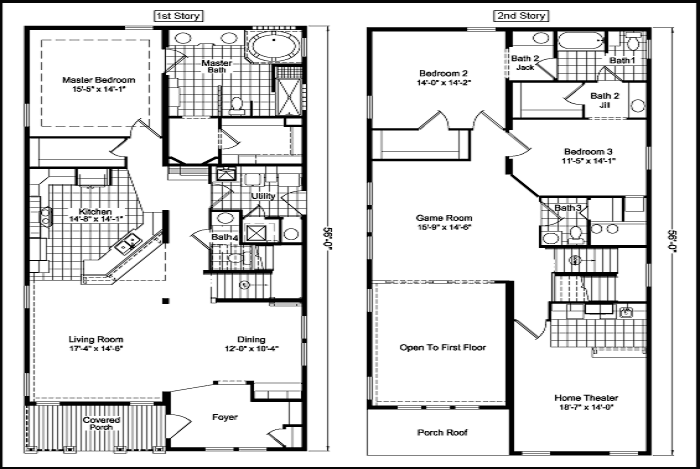Sustainable design architecture is in alignment with the Green Earth move. Environmentalists have left no stone unturned when it comes to preserving the ecological system. A growing population and urban developments have led to the depletion of natural resources and the polluting of the environment. The effects of indoor heating, air conditioning, and so on are adverse for the environment. But we cannot disregard the need for them, either. Sustainable design architecture is a solution to this growing concern.
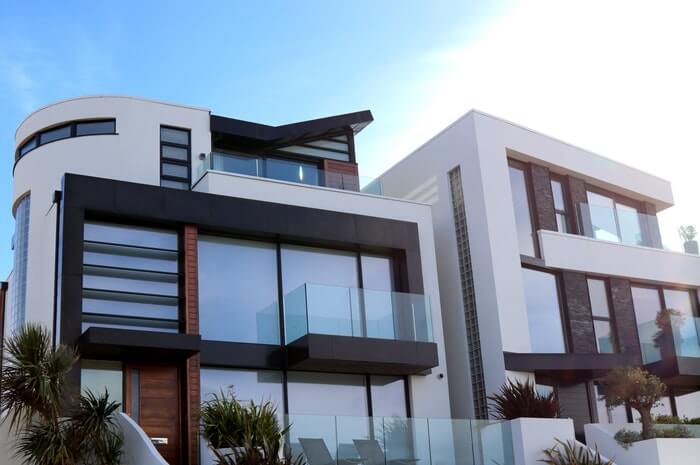 What is sustainable design architecture? Sustainable architecture can be described as an ecological design. There are numerous ways in which we can design our buildings to be more eco-friendly. The agenda is to ensure that the design of the building is environment-conscious. This covers its functioning and the manner in which the structure is constructed. Sustainable design architecture ensures minimized negative impact on the environment and is resource efficient. There is an emphasis on reducing the use of synthetic materials such as plastic, molded fiber, and resin.
What is sustainable design architecture? Sustainable architecture can be described as an ecological design. There are numerous ways in which we can design our buildings to be more eco-friendly. The agenda is to ensure that the design of the building is environment-conscious. This covers its functioning and the manner in which the structure is constructed. Sustainable design architecture ensures minimized negative impact on the environment and is resource efficient. There is an emphasis on reducing the use of synthetic materials such as plastic, molded fiber, and resin.
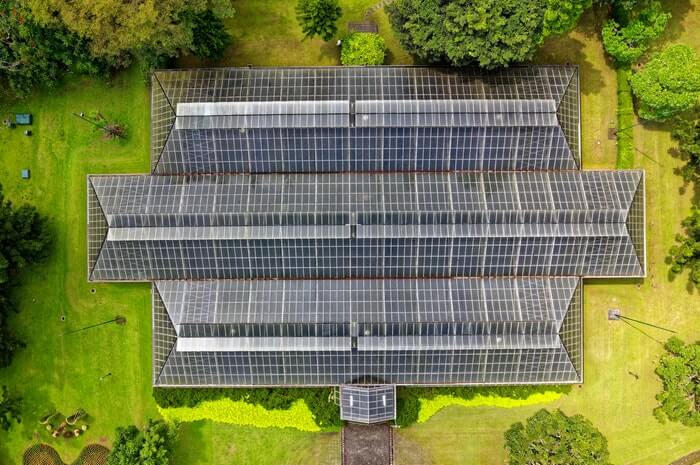 Why should we consider sustainable design architecture? Sustainable design architecture reduces the adverse effects of a building on the environment. This is done by using efficient and environment-friendly building techniques, such as moderating the use of energy and materials. Much of our design has to do with the comforts that we incorporate into our structures. We implement many features such as heating, air-conditioning, ventilation and lighting, which are not necessarily eco-friendly.
Why should we consider sustainable design architecture? Sustainable design architecture reduces the adverse effects of a building on the environment. This is done by using efficient and environment-friendly building techniques, such as moderating the use of energy and materials. Much of our design has to do with the comforts that we incorporate into our structures. We implement many features such as heating, air-conditioning, ventilation and lighting, which are not necessarily eco-friendly.
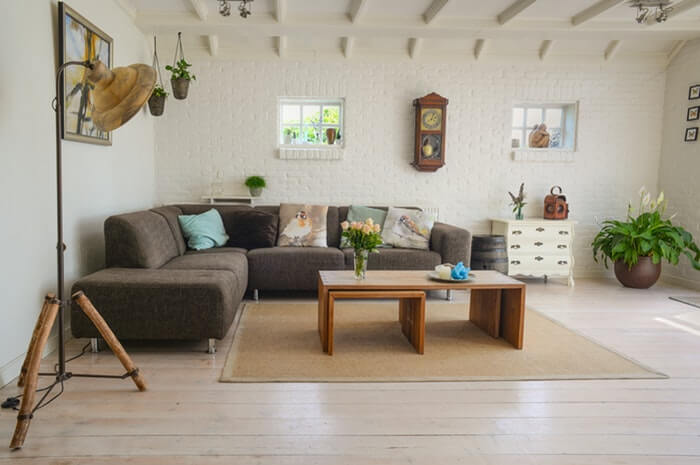 Sustainable design architecture tips Here are some tips that can help us design sustainable structures: Natural lighting: Sunroofs in areas of low light is an energy-saving option. A large amount of energy is used to light up common areas that do not have windows or much natural light. Rooms should be designed with large windows that invite plenty of light, which can also help brighten adjacent rooms. Retractable canopies outside windows are advisable, as a canopy can restrict the quantity of natural light that streams into a room. Efficient Lights: LED lights are low on power consumption and can save on the electricity bill. The efficient light system also includes the use of good quality wiring, such as copper wiring, which minimizes energy loss during transit. Carbon footprint: Reducing one’s carbon footprint is a part of sustainable design architecture. Building smaller strictures and rooms are one technique. The larger your room, the more heating, cooling, lighting, etc. it needs. Designing rooms that are of a comfortable size is a part of environmental consciousness. Solar Panels: Solar energy can supplement some of the energy requirement of the building. They can be used as roofs or even exterior wall panels. Solar Water Heater: A building can save a huge amount on their electric bill by using solar water heating technology. In colder climates, it makes much economic sense. Insulation: Buildings that are well-insulated use less energy for heating and cooling. To make your building more energy efficient, you could ensure better insulation and sealing of escape channels.
Sustainable design architecture tips Here are some tips that can help us design sustainable structures: Natural lighting: Sunroofs in areas of low light is an energy-saving option. A large amount of energy is used to light up common areas that do not have windows or much natural light. Rooms should be designed with large windows that invite plenty of light, which can also help brighten adjacent rooms. Retractable canopies outside windows are advisable, as a canopy can restrict the quantity of natural light that streams into a room. Efficient Lights: LED lights are low on power consumption and can save on the electricity bill. The efficient light system also includes the use of good quality wiring, such as copper wiring, which minimizes energy loss during transit. Carbon footprint: Reducing one’s carbon footprint is a part of sustainable design architecture. Building smaller strictures and rooms are one technique. The larger your room, the more heating, cooling, lighting, etc. it needs. Designing rooms that are of a comfortable size is a part of environmental consciousness. Solar Panels: Solar energy can supplement some of the energy requirement of the building. They can be used as roofs or even exterior wall panels. Solar Water Heater: A building can save a huge amount on their electric bill by using solar water heating technology. In colder climates, it makes much economic sense. Insulation: Buildings that are well-insulated use less energy for heating and cooling. To make your building more energy efficient, you could ensure better insulation and sealing of escape channels.
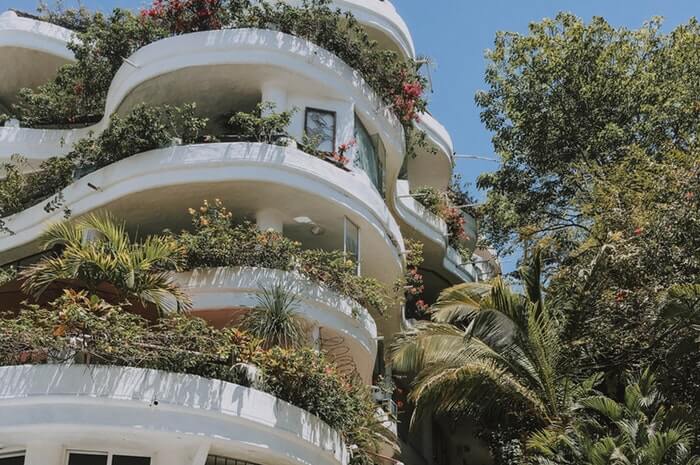 Terrace garden: Buildings in warm locations should consider making flat roofs. Planting trees or shrubs on the roof can help keep the building cool and reduce expenditure on cooling. Wind turbine: In a windy place you can have a wind turbine, which can be used to generate electricity. Recycled materials: Recycled materials can be used for various parts of the building. For example, recycled copper wiring or salvaged materials from demolition sites can be used. This is cost-efficient as well as eco-friendly. We can use natural materials and materials with a lower volatile organic compound (VOC). VOC is harmful for the health of the building occupants. It is good to evaluate the sustainable standard of the material before deciding to use it. Other green solutions include waste management, energy conservation, rain screens, natural ventilation, and passive heating and cooling.
Terrace garden: Buildings in warm locations should consider making flat roofs. Planting trees or shrubs on the roof can help keep the building cool and reduce expenditure on cooling. Wind turbine: In a windy place you can have a wind turbine, which can be used to generate electricity. Recycled materials: Recycled materials can be used for various parts of the building. For example, recycled copper wiring or salvaged materials from demolition sites can be used. This is cost-efficient as well as eco-friendly. We can use natural materials and materials with a lower volatile organic compound (VOC). VOC is harmful for the health of the building occupants. It is good to evaluate the sustainable standard of the material before deciding to use it. Other green solutions include waste management, energy conservation, rain screens, natural ventilation, and passive heating and cooling.
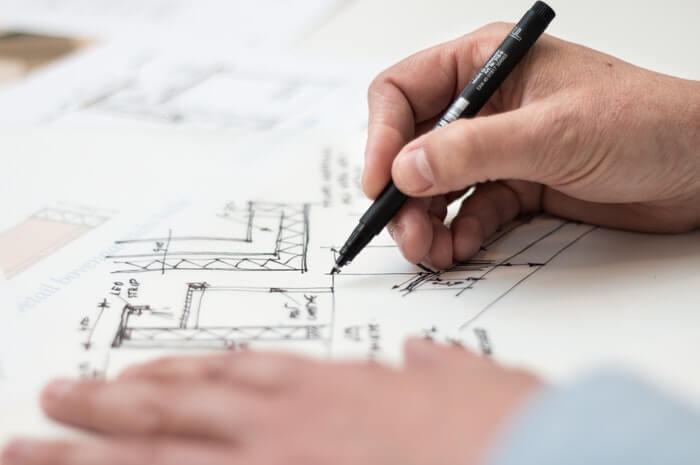 Take Away Do you have an idea that needs to be expressed in a sustainable design? Or a construction design that needs to be converted to a more sustainable model? Designing a sustainable structure depends largely on the area and the available resources. Some of the above tips can be easily incorporated into the design, while others may not be applicable. BluEntCAD takes pride in emphasizing green architecture and employs the latest technologies to ensure that your buildings are as sustainable and practical as possible. If you are looking for a sustainable solution, give us a call today!,
Take Away Do you have an idea that needs to be expressed in a sustainable design? Or a construction design that needs to be converted to a more sustainable model? Designing a sustainable structure depends largely on the area and the available resources. Some of the above tips can be easily incorporated into the design, while others may not be applicable. BluEntCAD takes pride in emphasizing green architecture and employs the latest technologies to ensure that your buildings are as sustainable and practical as possible. If you are looking for a sustainable solution, give us a call today!,
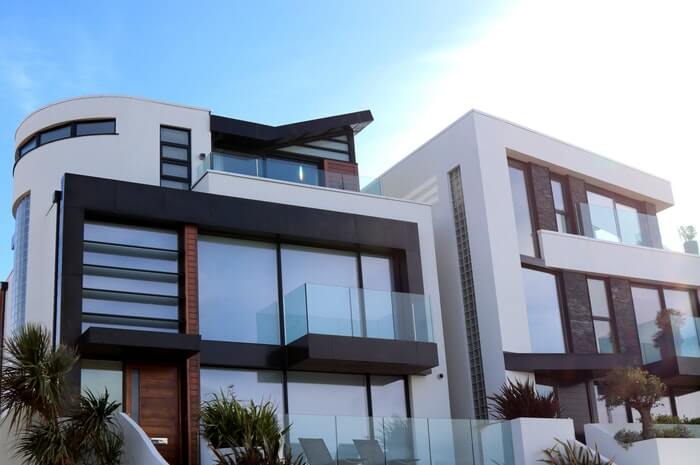
Sustainable Design Architecture And its Positive Effect on The Ecological System
Table of Contents: Introduction What is sustainable design architecture Why should we consider sustainable design architecture Sustainable design architecture tips Take Away

